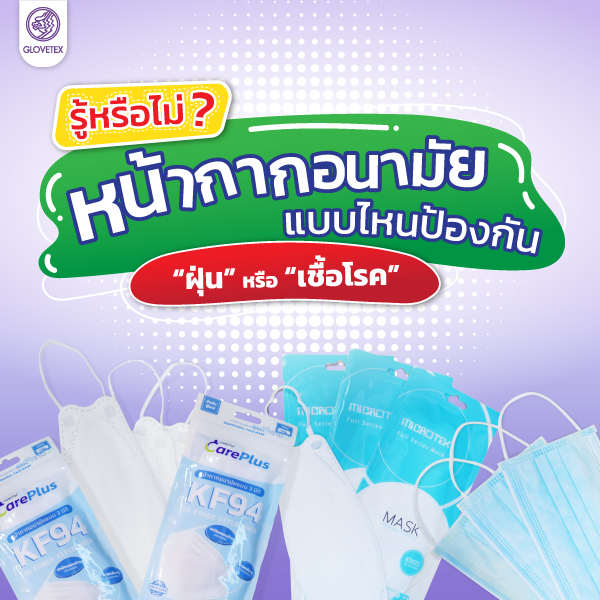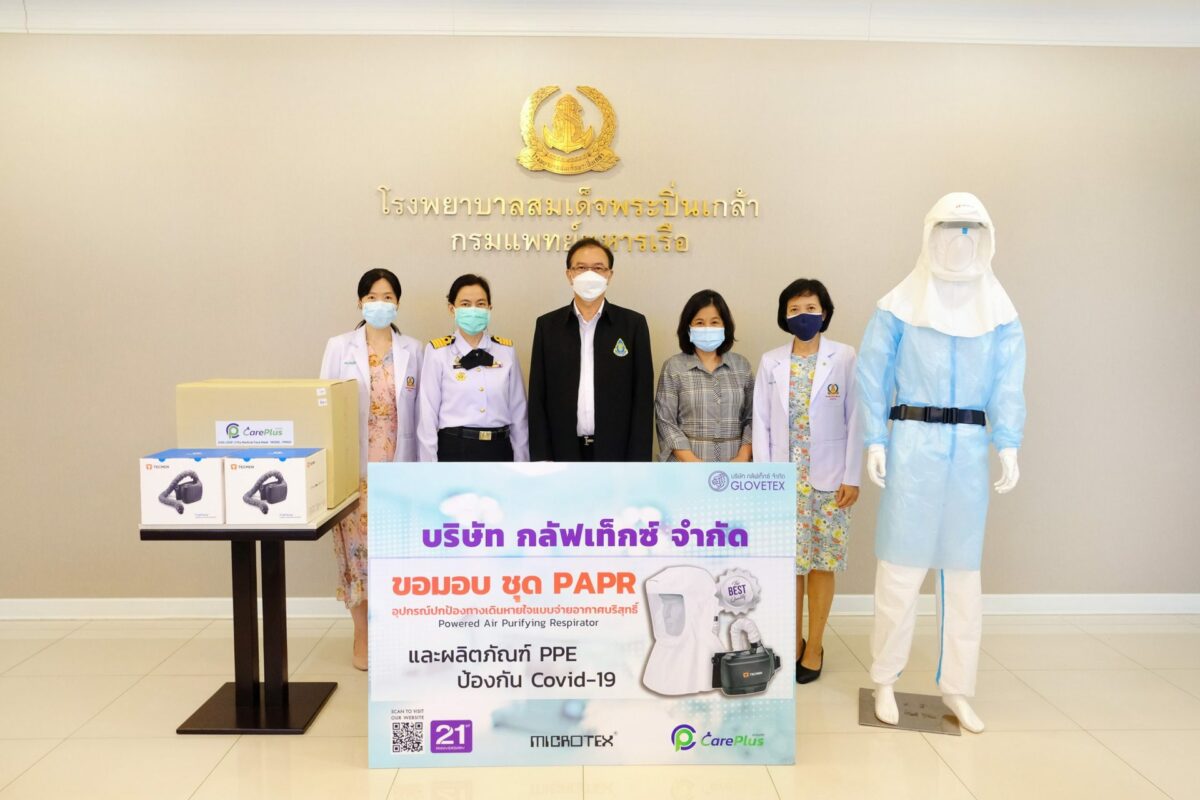Did You Know? Which Type of Face Mask Protects Against “Dust” or “Pathogens”

[vc_row equal_height=”yes” content_placement=”middle”][vc_column width=”2/3″ css=”.vc_custom_1631760599968{border-top-width: 15px !important;border-right-width: 15px !important;border-bottom-width: 15px !important;border-left-width: 15px !important;padding-top: 150px !important;padding-bottom: 150px !important;background-image: url(https://glovetex.com/wp-content/uploads/2021/09/เกี่ยวกับหน้ากากอนามัยgt1.jpg?id=3017) !important;background-position: center !important;background-repeat: no-repeat !important;background-size: cover !important;border-left-color: #ffffff !important;border-left-style: solid !important;border-right-color: #ffffff !important;border-right-style: solid !important;border-top-color: #ffffff !important;border-top-style: solid !important;border-bottom-color: #ffffff !important;border-bottom-style: solid !important;}”][/vc_column][vc_column width=”1/3″ css=”.vc_custom_1618587353573{border-top-width: 15px !important;border-right-width: 15px !important;border-bottom-width: 15px !important;border-left-width: 15px !important;padding-top: 30px !important;padding-right: 30px !important;padding-bottom: 30px !important;padding-left: 30px !important;background-color: #f2f2f2 !important;border-left-color: #ffffff !important;border-left-style: solid !important;border-right-color: #ffffff !important;border-right-style: solid !important;border-top-color: #ffffff !important;border-top-style: solid !important;border-bottom-color: #ffffff !important;border-bottom-style: solid !important;}”][vc_column_text]
With the ongoing COVID-19 pandemic in Thailand, the number of cases continues to rise despite the availability of vaccines that help mitigate severe outcomes. It’s clear that COVID-19 will be with us for a while, and wearing face masks remains essential. But did you know that there are different types of face masks, each designed to protect against various threats? In this article, we will explore the different types of masks and their specific uses, so you can choose the one that best meets your needs.
[/vc_column_text][/vc_column][/vc_row][vc_row css=”.vc_custom_1618492982393{margin-top: 30px !important;}”][vc_column][vc_column_text]
1. Medical Masks
Medical masks are made from fabric or polypropylene, a type of plastic that is safe for users. They help protect against respiratory diseases and can prevent the spread of bacteria or viruses from person to person by up to 99%. Additionally, they can filter out dust and pollen particles as small as 3 microns, with a filtration efficiency of about 66.37%. For better protection, it is recommended to use two layers, which can provide up to 89.75% efficiency. When wearing a medical mask, ensure the colored side faces outwards to block secretions from others. Medical masks are effective in protecting against viruses, bacteria, dust, pollen, and secretions from others.
2. Carbon Masks
Carbon masks have similar properties to medical masks, but with the added benefit of a carbon layer that improves the filtration of unpleasant odors. They typically consist of four layers of synthetic fibers. They can filter out bacteria up to 95% and dust particles as small as 3 microns with a filtration efficiency of about 66.37%. Wearing two layers can enhance protection to up to 89.75%, similar to medical masks. Carbon masks are effective in protecting against viruses, bacteria, dust, pollen, and secretions from others.
3. Cloth Masks
Cloth masks come in two types:
- The first type is made from cotton and is used to protect against dust and to prevent the spread of mucus or saliva from coughing or sneezing. However, it does not filter out very small pathogens effectively.
- The second type is made from layered synthetic fibers. This type can filter out dust and protect against bacteria or fungi.
4. Foam Masks
Foam masks are made from carbon polyurethane and are designed to filter air, smoke, and dust specifically. They are washable, quick-drying, and retain their shape without wrinkling. They effectively filter out small dust particles and pollen but are not effective against PM2.5 dust and viruses, making them less suitable for high-risk situations. Foam masks are capable of protecting against viruses, bacteria, dust, pollen, mucus, and saliva.
5. KF94 Masks
KF Masks (Korea Filter) are produced according to KOSHA standards. The masks that meet the standard are labeled with “KF” on the packaging, and there are two types: KF94 and KF80. These masks can filter out dust particles larger than 3 microns with 100% efficiency. For smaller particles such as PM2.5 (which is tested against 0.3-micron particles), KF94 provides up to 94% protection, while KF80 offers 80% protection.
For viruses like COVID-19 or other contagious pathogens that spread through droplet transmission (where droplets are generally larger than 3 microns), both KF94 and KF80 masks can offer 100% protection. However, in environments with high concentrations of pathogens, such as crowded rooms with poor ventilation, the pathogens might be in very small airborne particles less than 1 micron. In such cases, KF94 masks provide up to 94% protection, similar to N95 masks, but must be worn snugly with no gaps for maximum effectiveness.
6. N95 Masks
N95 masks are highly effective in their use. A distinctive feature of this mask is its shape, which fits snugly over the face, nose, and mouth, ensuring that viruses and contaminants cannot pass through. Made from polypropylene, N95 masks can filter out particles as small as 0.3 microns, including viruses like COVID-19. Additionally, N95 masks also provide protection against small dust particles such as PM2.5, with a filtration efficiency of up to 95%. N95 masks are capable of protecting against viruses, bacteria, dust, pollen, and bodily fluids.
7. FFP1-FFP2 Masks
FFP1 and FFP2 masks offer protection levels similar to N95 masks and are effective in safeguarding against dust, bacteria, and viruses. They are capable of trapping small particles, including PM2.5 and PM10, with an efficiency of at least 94%. Unlike N95 masks, FFP1-FFP2 masks also provide additional protection against metal fumes and chemicals. They are designed with a contoured fit that covers the nose and mouth snugly. FFP1-FFP2 masks protect against viruses, bacteria, dust, pollen, and bodily fluids.
Face masks have become essential in the current situation. It’s almost unimaginable to find someone who isn’t familiar with or hasn’t used them, given the global spread of COVID-19. Masks have become as indispensable as any other part of our daily lives. Choosing the right type of mask is crucial for effectively preventing respiratory infections and protecting against certain types of pollution. Therefore, it’s important to select the appropriate mask type for your specific needs to ensure protection against both pathogens and airborne particles. Using an unsuitable mask may not offer the intended protection.
[/vc_column_text][/vc_column][/vc_row][vc_row][vc_column width=”1/4″][porto_image_frame image_id=”3018″ link=”url:https%3A%2F%2Fwww.ppemate.com%2Fproduct%2Fnew-arrival%2F622%2F%23undefined”][/porto_image_frame][/vc_column][vc_column width=”1/4″][porto_image_frame image_id=”3019″ link=”url:https%3A%2F%2Fwww.ppemate.com%2Fproduct%2Fnew-arrival%2F624%2F%23undefined”][/porto_image_frame][/vc_column][vc_column width=”1/4″][porto_image_frame image_id=”3020″ link=”url:https%3A%2F%2Fwww.ppemate.com%2Fproduct%2F%25E0%25B8%25AB%25E0%25B8%2599%25E0%25B9%2589%25E0%25B8%25B2%25E0%25B8%2581%25E0%25B8%25B2%25E0%25B8%2581%25E0%25B8%25AD%25E0%25B8%2599%25E0%25B8%25B2%25E0%25B8%25A1%25E0%25B8%25B1%25E0%25B8%25A2%2F190%2F%23undefined”][/porto_image_frame][/vc_column][vc_column width=”1/4″][porto_image_frame image_id=”3021″][/porto_image_frame][/vc_column][/vc_row][vc_row css=”.vc_custom_1618492982393{margin-top: 30px !important;}”][vc_column][vc_column_text]
Written by: Napat Khampa
References: Department of Health, Ministry of Public Health
อีกช่องทางสอบถาม หรือขอใบเสนอราคา
https://www.facebook.com/Glovetex.Safety
Tel. 083-989-7512 (เพื่อสอบถาม หรือขอใบเสนอราคา)
Line : @microtex หรือคลิก https://lin.ee/wgXULga
[/vc_column_text][/vc_column][/vc_row]



